
Aug '05 - Jan '11
It's hard to believe that this is my last quarter of studio. Maybe it's getting older or maybe it's the sheer intensity of the last 3 years, but it "seems like yesterday" that I turned to architecture bright-eyed and naive. I'm happy to say that my interest in architecture has only been refined and intensified; the horror stories about burnout and bitterness have luckily not applied. What's more, I haven't found architects and professors to be the egotistical monsters that they are often purported to be; in fact, the overwhelming majority have been insightful, reasonable, and sometimes even empathetic (!!) people. It's not rose-colored glasses or late-year nostalgia that makes me say this.
I do think that architectural education is an environment for a particular type of person. It is possible to be self-assured without being egotistical, and strong personalities with a tough skin seem to thrive in this environment. I learned very quickly to put my ego aside and allow myself to learn and experiment without the burden of the fear of failure. I feel that I've made a tremendous amount of progress but that there is 100 times more to learn and experience, and that to me is the most exciting part about architectural education. It merely whets the appetite.
--
So at long last, we came to the studio selection day. Last quarter a controversy erupted when we found out we would have to choose between two options for our last studio; we were told that an imbalance would result in a lottery, and everyone fell into deep despair, positive that they would be horribly upset with the eventual lottery results. Two months later, selection day rolled around, and it was a pleasure. 11 students for Ann Pendleton's studio (using game theory as a starting point for a mat building design), and 8 students for Kipnis and Reiser. I chose the latter.
The studio engages the project of surface expression with particular attention to the animus, or the potential energy or power contained in certain objects and arrangements. Our jumping-off point was Raymond Loewy's GG1, a form widely considered muscular, powerful, energetic. 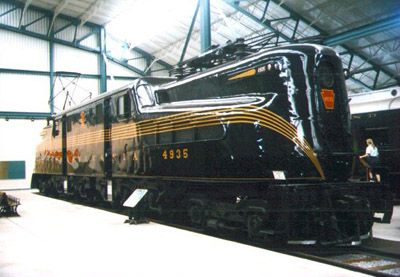
Is it the specific geometries and/or proportions that create the metaphysical space for this animus? A look at model train replicas reveals how alternative geometries and material arrangements can result in the loss of animus or, more interestingly, caricature.
Lionel GG1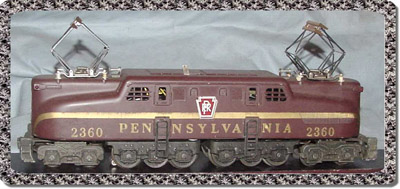
Is there an animus that is "too cold" or "too hot"? Is there a "just right"? Kipnis analogizes this spectrum loosely: "Brancusi: too cold, Fat Car: too hot, Jeff Koons: just right."
Too Cold
Too Hot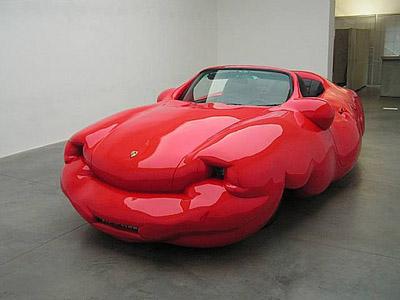
Just Right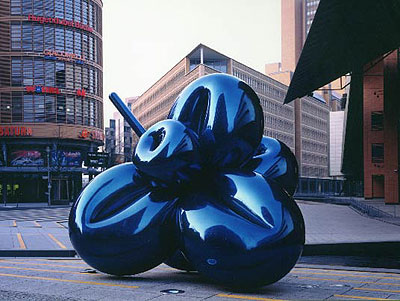
The specific examples are not as important to me as the ideological proposition of the continuum. That there is a "just right" implies that there is an interest in subtlety; too cold is perhaps lacking in animus, and too hot draws too much attention to the processes that define the animus, thereby mediating its effect.
--
Our first assignment was to take an old project and "Raymond Loewy it." I chose an old project from my first year (which, incidentally, Kipnis called a "bad combination of Mies + [something else] done in an interesting way") because it had some of the formal potentials related to locomotion.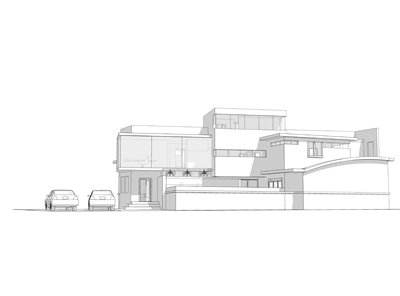
My Loewyfication approach was fairly simplistic. Apply a system of complex curvatures that begin to resolve the unity of the system, and begin to manipulate those surfaces in an attempt to discover an animus within. I didn't get very far in the manipulations, but "The Diner" is beginning to raise some interesting problems yet to be resolved. Kipnis pointed to my Diller-and-Scofioesque ghosting of the entrance as one of those problems.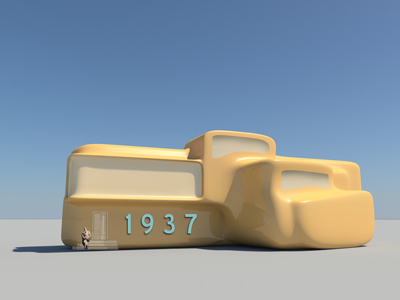
Of course, this was a simple exercise to kick off the discussion and probably won't be developed any further. We spent the rest of the first studio session discussing cartoons (e.g., Popeye's forearms) and bad art (in the context of our problem). Our next task is to explore the animus and begin to develop a proposal for the remusculature of the Waterloo Station. More as that develops.
Larger images at my Flickr.



7 Comments
fun sketch problem. i love revisiting old projects with a new angle. i did a couple of projects like that in school (e.g., project your building into the future 25 yrs: what has become of it? or, redesign your project as if it was by your favorite architect.) i still use these little mini-problems when i feel stuck or stale.
kipnis seems like a real character. look forward to hearing more about the studio. especially your take on reiser. my memory of him from when he came as visiting critic to undergrad was...
"The studio engages the project of surface expression with particular attention to the animus, or the potential energy or power contained in certain objects and arrangements."
I'm curious what the "project of surface expression" refers to... certainly you're not doing a skin studio, and it can't be as easy as the fat car, or Doug Graf with an orange under his shirt.
i'd like to imagine that the model train would be just as powerful, if the photo was taken from the same angle as the real one, and if lenses and lighting were all arranged... it's easy to disparage the model when it's a flat elevation view.
any consideration for how any buildings/models you do can't possibly express the 'animus' of the eventual building at full scale? or are you banking on a koonsian amplification?
from this post it seems that the issue of scale could introduce some interesting aspects to the project.
Evan> I read your comment on my Blackberry, and so I couldn't see who wrote it until the very end... but I was pretty sure that it was Addison. What with the mention of Doug Graf and the defense of Lionel model trains... :-)
But yes, we ARE doing a skin project. Or, more specifically, an envelope project. I admit that the representation of the model train is a bit unfair, but if you saw the real GG1 in elevation you would see that it is substantially longer and the negotiation of complex geometry at the nose is significantly more refined... my trickery is merely a way to exaggerate the differences.
You bring up an interesting point about scale. Manipulation of scale is, of course, essential to Koons' work... but take this photo, for instance. Since you have seen the original, you understand its effects at 1:1 scale, even though this image would suggest simply a balloon dog that you could hold in your hand. So in the same way that you can project a scalar understanding onto this picture, we will be projecting a scalar understanding onto our models and drawings. Fair enough?
Regarding the "project of surface expression," just take a look in the archives of your current employer... also look at anything that was generated parametrically or with Rhinoscript. Look at patterning. The argument is that parametric processes in contemporary work have been used unselfconsciously as an end, not as a means. The envelope is the project and the animus is the program; any parametric or process-based design serves the needs of the animus, not just the internal coherence of the system.
yeah i see what you mean about scale, of course the translation across scale is always an issue in architecture, and maybe not the most fertile ground for your project.
personally, i think the investigation of the surface expression is much more interesting. of course you can look at herzog & de meuron, but i would definitely recommend looking at the later work. particularly in Prada Tokyo, where the "surface" begins to merge with the volume it encloses. they say (i still don't quite buy it) that the prada store has achieved a perfect synthesis between enclosure, program, structure, etc. Eiffel tower as precedent? meh.
it might be more useful to look at St Jakobs Field, then Allianz Arena, then Beijing as a progression.... the skin gradually grows, expands into the interior... the three of those taken together might be a nice diagram.
but i'd be worried if it turns into a patterned-skin project. because... why bother?
No, no... definitely not headed for a skin-patterned project. But I don't get your comments about Prada Tokyo. Other than the extrusion of some of the diamond panes, how is the "surface" beginning to merge with the volume it encloses?
As for the stadiums... right now Allianz is the most useful to me. Got a few ideas I've got to churn through...
well, exactly that - the extruded diamonds creating interior spaces, and (to a lesser extent) the diamond (in plan) cores could be considered part of the same system. the fact that the structure is totally covered by the cores, floors, and diagrid (look, no columns!) is, i think, what they mean by the synthesis. the only problem, really, is that floors need to be flat, and so can't really be one and the same with the skin. but i think they did achieve more of a synthesis than with Allianz, where the skin is clearly distinct from the concrete structure. There's certainly a thread in their work that aims for this kind of elaboration of skin into structure and space, but i don't think they;ve quite got it yet (haven't seen how it works in beijing, exactly). the eiffel tower example is pretty apt i think, a building that creates space and enclosure and ornament with nothing more than its structural system (ok, not so much enclosure, but still).
Block this user
Are you sure you want to block this user and hide all related comments throughout the site?
Archinect
This is your first comment on Archinect. Your comment will be visible once approved.